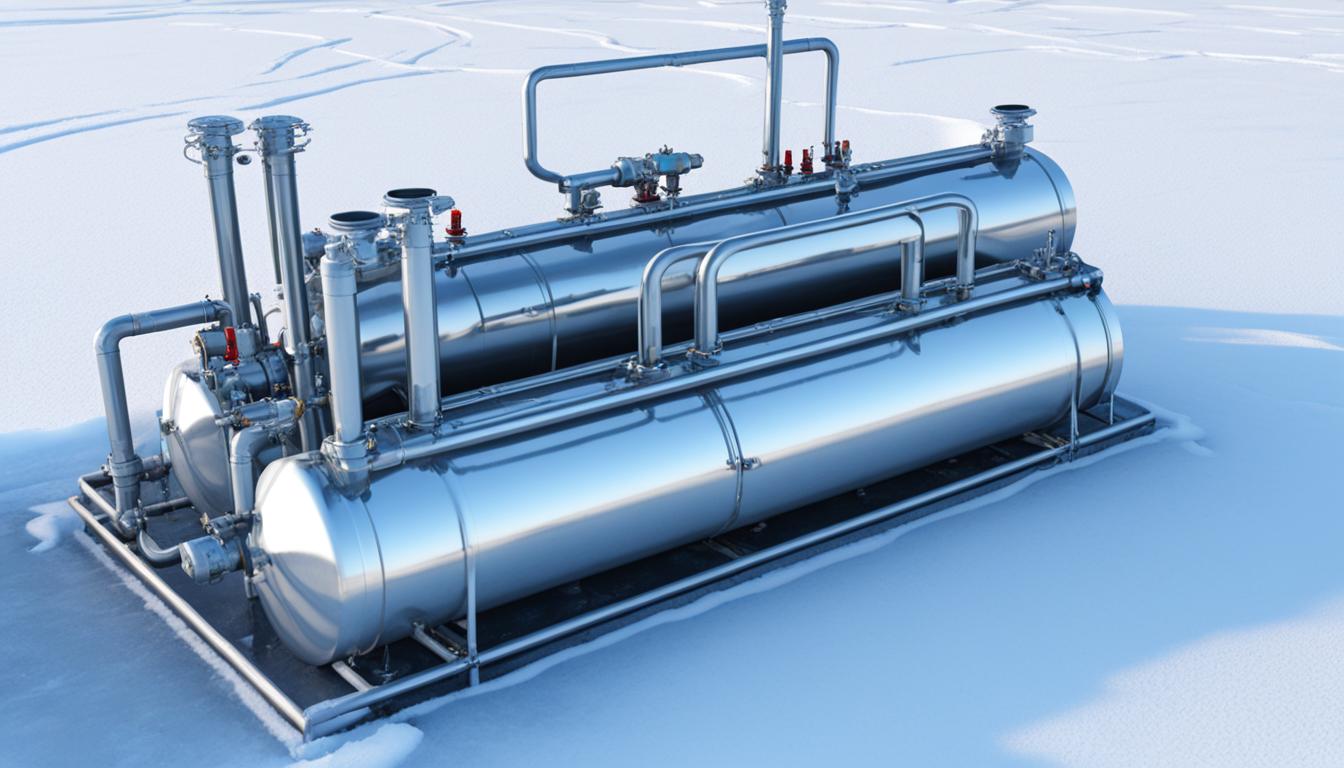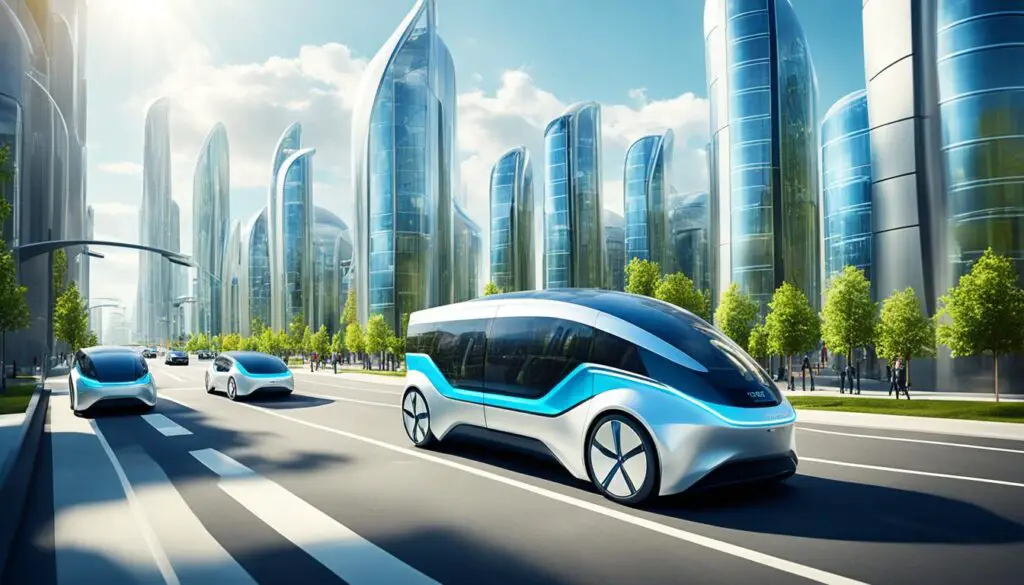
Fuel Cell Vehicle Developments: The Clean Energy Revolution
Fuel cell vehicle development is progressing rapidly, driving us towards a cleaner and more sustainable future. Recent developments in the Netherlands have seen Landport, a subsidiary of the Louwman Group, sign an agreement to distribute EODev’s GEH2® hydrogen power generator. This partnership aims to address the growing demand for charging points and stations as zero-emission vehicles become mandatory in many municipalities by 2025. The global power generator market is estimated to reach USD 40 billion annually in 2023, with the potential to double by 2032. The Netherlands, being at the forefront of clean energy initiatives, is committed to combating climate change and has been actively working to replace polluting diesel gensets with more sustainable solutions like EODev’s GEH2®. Toyota has played a crucial role in supporting the development and integration of fuel cell technology, making it a key player in the clean energy revolution.
Key Takeaways:
- The Netherlands is actively working towards a cleaner future, replacing polluting diesel gensets with sustainable solutions like EODev’s GEH2® hydrogen power generator.
- Zero-emission vehicles are becoming mandatory in many municipalities by 2025, driving the demand for charging points and stations.
- The global power generator market is estimated to reach USD 40 billion annually in 2023, with the potential to double by 2032.
- Toyota has been instrumental in supporting the development and integration of fuel cell technology, contributing to the clean energy revolution.
- Fuel cell vehicle development is an essential part of the global efforts to combat climate change and promote sustainability.
The Role of Cryogenic Equipment in Fuel Cell Vehicle Development
Cryogenic equipment plays a vital role in the development and deployment of fuel cell vehicles. This specialized equipment is designed to handle materials at ultra-low temperatures, typically below -150 degrees Celsius. It is used for the storage, transportation, and processing of gases, liquids, and solids in extreme conditions.
The demand for cryogenic equipment is expected to grow due to the escalating need for gases in various industries and the crucial role of liquefied natural gas (LNG) storage and distribution networks. Cryogenic storage tanks, portable cryogenic tanks, and liquid nitrogen storage solutions are experiencing increased demand.
Moreover, the space industry’s expansion and the growing number of space missions require cryogenic devices for preserving space specimens. The integration of cryogenic technology into fuel cell vehicles improves their efficiency, safety, and reliability, ultimately contributing to the development of cleaner energy solutions.
Market Outlook and Future Trends in Fuel Cell Vehicle Development
The market outlook for fuel cell vehicles is promising, with a strong focus on clean energy and sustainable transportation solutions. As the world becomes increasingly aware of the negative impacts of traditional fossil fuel-powered vehicles on the environment, there is a growing demand for alternative fuel technologies.
The global market for cryogenic equipment, which plays a vital role in fuel cell vehicle development, is projected to reach a value of $25.25 billion by 2034, with a compound annual growth rate (CAGR) of 6.6%. The increasing industrial applications of cryogenic equipment in sectors such as healthcare, food processing, electronics, and aerospace are driving market expansion.
The demand for cryogenic equipment is further fueled by the growing adoption of liquefied natural gas (LNG) and industrial gases, advancements in cryogenic technology, and the focus on environmental sustainability. The expansion of space exploration activities also contributes to the increasing need for cryogenic devices.
The East Asia region, particularly countries like China, Japan, and South Korea, is expected to emerge as a significant market for cryogenic equipment due to the rising demand for clean energy solutions and gas-powered energy generation plants. The North American market for cryogenic equipment is also poised for growth, with a projected size of $6.51 billion by 2024.
Future Trends
The future trends in fuel cell vehicle development revolve around technological advancements and increased adoption of clean energy solutions. Key trends include:
- Advancements in fuel cell technology to enhance performance, efficiency, and durability.
- Expansion of hydrogen infrastructure to support the widespread adoption of fuel cell vehicles.
- Collaborations and partnerships between automakers, energy companies, and government initiatives to accelerate the development and deployment of fuel cell vehicles.
- Integration of fuel cell technology in various vehicle types, including passenger cars, trucks, buses, and even drones.
- Focus on cost reduction and scalability to make fuel cell vehicles more affordable and accessible to a wider consumer base.
Overall, the market outlook for fuel cell vehicles is optimistic, with sustained growth anticipated. The increasing demand for clean energy solutions, advancements in cryogenic technology, and the expansion of global markets present lucrative opportunities for industry players. Fuel cell vehicles are poised to play a crucial role in the future of transportation, driving us towards a greener and more sustainable future.

Conclusion
Fuel cell vehicle developments are revolutionizing the way we think about clean energy. The integration of cryogenic equipment has significantly enhanced the efficiency, safety, and reliability of these vehicles, paving the way for a greener and more sustainable transportation future.
The global market for cryogenic equipment is poised for sustained growth due to expanding industrial applications and the increasing concerns for environmental sustainability. As the demand for cryogenic equipment rises in sectors such as healthcare, LNG, industrial gases, and space exploration, opportunities for growth and innovation abound.
The East Asia region, including giants like China, Japan, and South Korea, is expected to be at the forefront of this clean energy revolution. Their focus on gas-powered energy generation plants and investment in clean energy solutions positions them as major players in the market.
Looking ahead, the future of fuel cell vehicle development is promising. Continuous advancements and innovations will continue to drive us towards a greener and more sustainable transportation ecosystem, reducing carbon emissions and building a brighter future for generations to come.
FAQ
What is the role of cryogenic equipment in fuel cell vehicle development?
Cryogenic equipment plays a vital role in the development and deployment of fuel cell vehicles. It is used for the storage, transportation, and processing of gases, liquids, and solids at ultra-low temperatures, improving the efficiency, safety, and reliability of these vehicles.
What are the industrial applications of cryogenic equipment?
Cryogenic equipment has various industrial applications, including healthcare, food processing, electronics, and aerospace. It is also essential for the storage and distribution of liquefied natural gas (LNG) and the preservation of space specimens.
What is the projected market size for cryogenic equipment?
The global market for cryogenic equipment is projected to reach a value of $25.25 billion by 2034, with a compound annual growth rate (CAGR) of 6.6%. This growth is driven by expanding industrial applications, advancements in cryogenic technology, and the focus on environmental sustainability.
Which regions are expected to be significant markets for cryogenic equipment?
The East Asia region, including China, Japan, and South Korea, is expected to be a major market for cryogenic equipment due to the rising demand for gas-powered energy generation plants and clean energy solutions. The North American market is also poised for growth, projected to reach a size of $6.51 billion by 2024.
What is the outlook for fuel cell vehicle development?
The future of fuel cell vehicle development looks promising, with continuous advancements and innovations driving us towards a greener and more sustainable transportation future. The integration of cryogenic equipment and the increasing demand for zero-emission vehicles contribute to the growth of this market.
